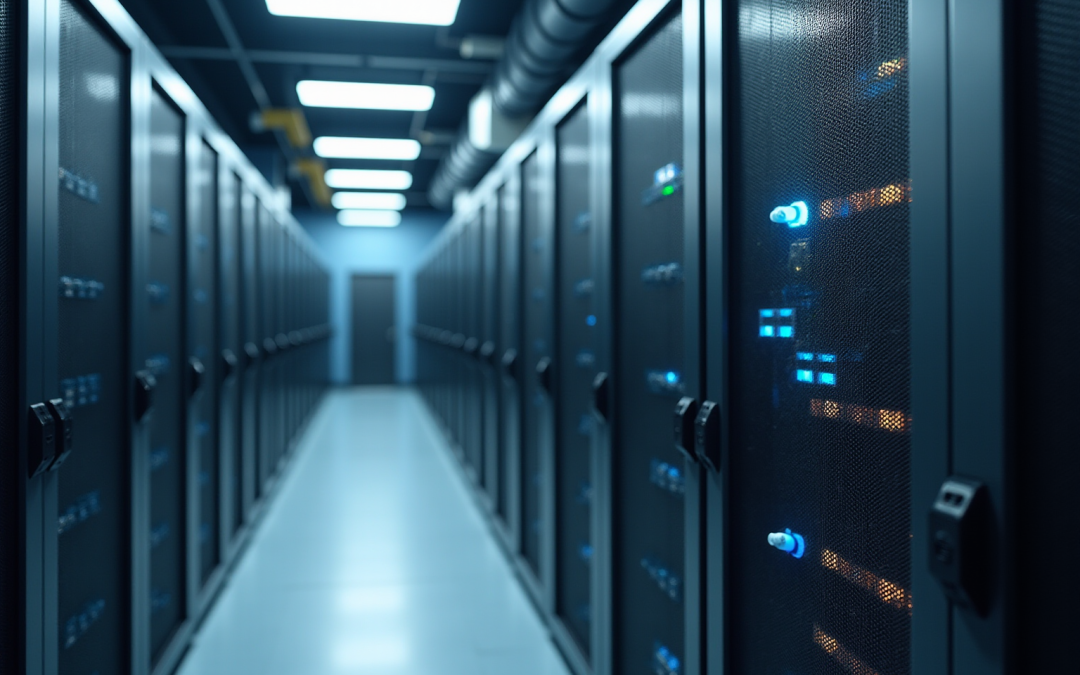Overview
The article presents ten compelling benefits of server liquid cooling systems specifically for electronics engineers. These advantages include:
- Enhanced energy efficiency
- Improved server reliability
- Substantial cost savings
Such benefits arise from the systems’ exceptional capability to manage heat loads effectively, which can lead to a reduction in operational costs by up to 90%. Furthermore, these systems contribute to lower maintenance requirements, establishing them as a vital component in the operations of modern data centers.
Introduction
The rapid evolution of data centers has created an urgent demand for innovative cooling solutions that can meet escalating requirements. Server liquid cooling systems emerge as a transformative technology, delivering substantial benefits in energy efficiency, performance enhancement, and sustainability.
As electronics engineers confront the intricacies of modern thermal management, a critical question arises: how can these advanced liquid cooling systems not only optimize operational efficiency but also foster long-term cost savings and support environmental objectives?
Delving into the numerous advantages of server liquid cooling systems presents a compelling argument for their integration in the pursuit of high-performance, sustainable data center operations.
Gagner-Toomey Associates: Innovative Cooling Solutions for Data Centers
Gagner-Toomey Associates excels in providing innovative temperature regulation solutions specifically designed for data centers, focusing on a server liquid cooling system that significantly enhances performance and efficiency. The company represents a diverse portfolio of leading manufacturers, equipping engineers with essential tools to address complex thermal management challenges.
As the demand for energy-efficient refrigeration solutions surges—projected to grow from $5,654.8 million in 2024 to $48,427.0 million by 2034, with a CAGR of 23.96%—Gagner-Toomey remains dedicated to delivering cutting-edge solutions that align with the evolving needs of the electronics industry. Their commitment to outstanding customer service guarantees that clients benefit from the latest advancements in temperature control technologies, allowing them to effectively manage heat loads and enhance operational efficiency.
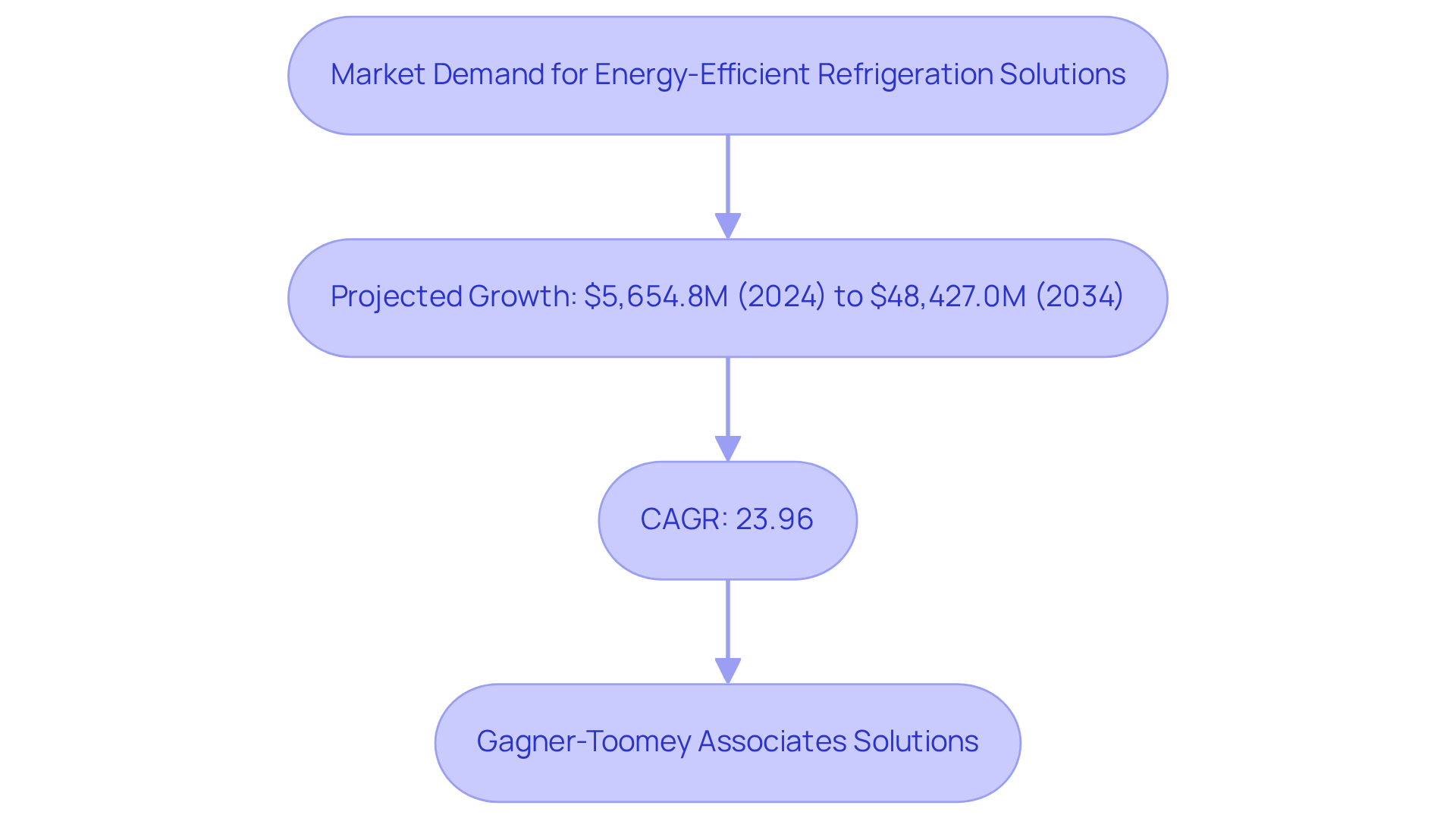
Energy Efficiency: Reducing Operational Costs with Liquid Cooling
Server liquid cooling systems are engineered to significantly enhance energy efficiency compared to traditional air temperature regulation methods. By leveraging substances with superior thermal conductivity, these systems effectively disperse heat, resulting in substantial energy savings. Recent research indicates that data facilities utilizing fluid temperature management can achieve energy reductions of up to 90%, with average savings around 50%. This not only reduces operational costs but also fosters sustainability within the industry.
For instance, the implementation of immersion technology has the potential to reduce a data center’s physical footprint by as much as 60%, optimizing space usage while addressing escalating thermal loads. Furthermore, as the demand for high-density AI and HPC workloads continues to rise, the limitations of air temperature management become increasingly evident, positioning the server liquid cooling system as a more viable option for maintaining performance and reliability.
Advanced pump technologies, including solenoid pumps capable of operating at pressures up to 16 Bar and rotary boost pumps equipped with DC brushless motors, are pivotal in these systems. These pumps deliver precision control through PWM technology and are engineered for low noise operation, making them ideal for sensitive electronic environments.
The rapid growth of the data center market for server liquid cooling systems, projected to expand at a CAGR of 21.30%, underscores the shift towards these sophisticated temperature control solutions, driven by the pressing need for efficiency and sustainability.
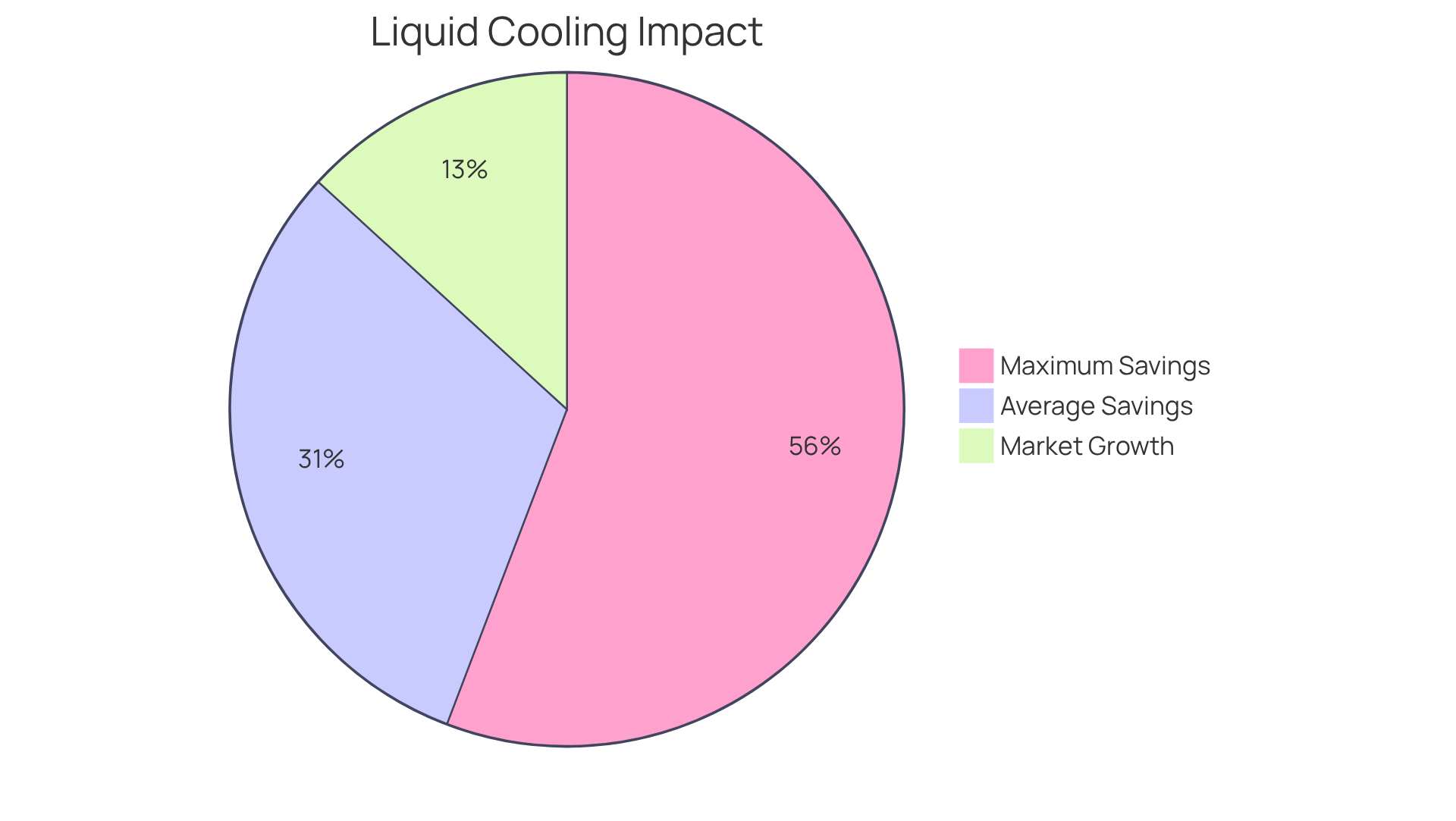
Performance Enhancement: Boosting Server Reliability with Liquid Cooling
The server liquid cooling system employs liquid refrigeration methods that deliver exceptional thermal regulation, a critical factor in maintaining optimal operating temperatures for high-performance servers. The server liquid cooling system effectively dissipates heat from vital components, significantly reducing the risk of overheating and subsequent equipment failures. Enhanced temperature control features not only bolster server reliability but also enable data facilities to implement a server liquid cooling system, allowing them to operate at higher capacities without compromising performance.
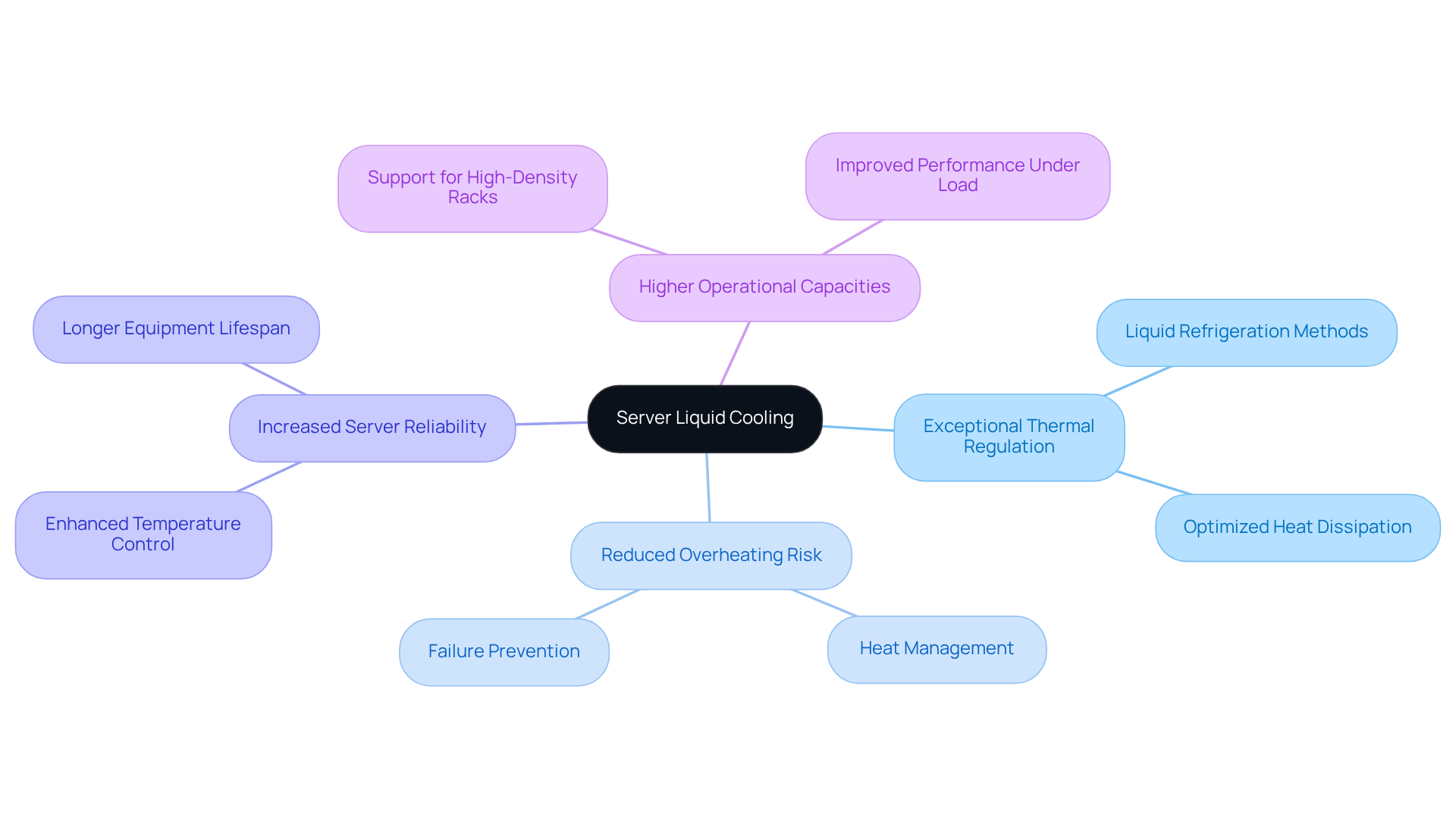
Space Optimization: Maximizing Data Center Layouts with Liquid Cooling
Liquid temperature regulation systems, such as the server liquid cooling system, significantly enhance space efficiency within data hubs, enabling more compact server arrangements that conventional air temperature systems cannot achieve. Unlike air refrigeration, which necessitates extensive airflow pathways and bulky equipment, a server liquid cooling system allows for a more streamlined design through fluid-based temperature regulation. This not only conserves valuable floor space but also accommodates greater computing power within a smaller footprint, ultimately boosting operational efficiency.
Temperature regulation constitutes a considerable portion of a data facility’s operational costs, making the implementation of a server liquid cooling system essential for effective temperature management solutions. Moreover, fluid heat dissipation methods can potentially reduce energy usage by as much as 90% compared to air-based methods, underscoring their effectiveness. Consequently, operators can achieve greater rack densities without compromising performance, establishing the server liquid cooling system as a crucial element in the design of contemporary data facilities.
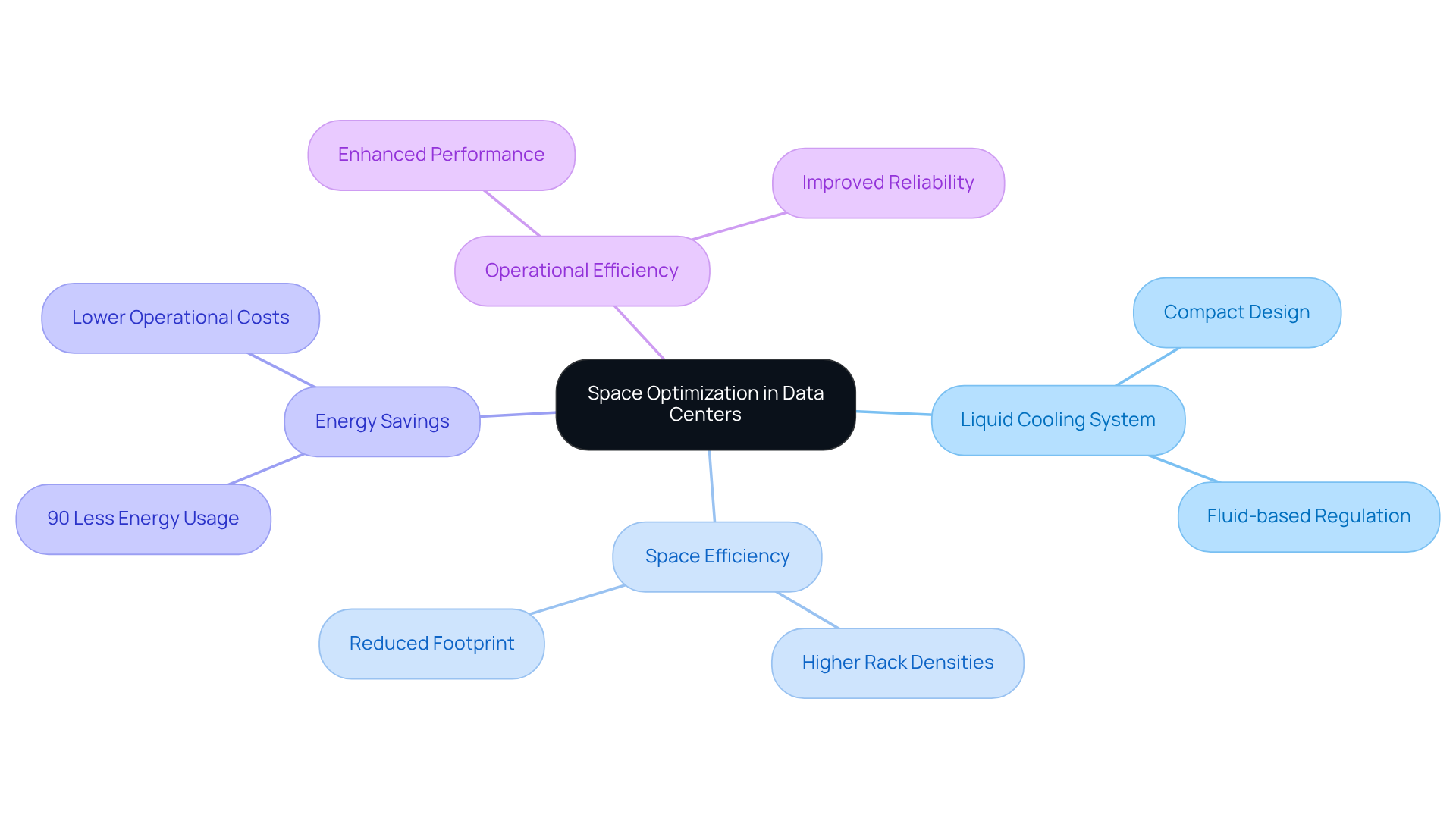
Environmental Impact: Lowering Carbon Footprints with Liquid Cooling
Liquid temperature regulation methods are crucial for minimizing carbon footprints by significantly reducing energy consumption and enhancing overall operational efficiency. By decreasing reliance on energy-intensive air conditioning, the server liquid cooling system empowers data centers to meet their sustainability goals. Recent studies highlight that the implementation of fluid-based temperature regulation can lead to reductions in greenhouse gas emissions of up to 21%. Furthermore, advanced implementations, such as cold plates and immersion refrigeration, have demonstrated potential emission reductions ranging from 15% to 21%, alongside a decrease in energy use by 15% to 20%.
Importantly, data facilities utilizing fluid refrigeration can achieve a physical size reduction of 50% compared to traditional air temperature regulation setups, thereby further improving their ecological impact. These advancements underscore the critical role of the server liquid cooling system as an essential component of sustainable data facility operations.
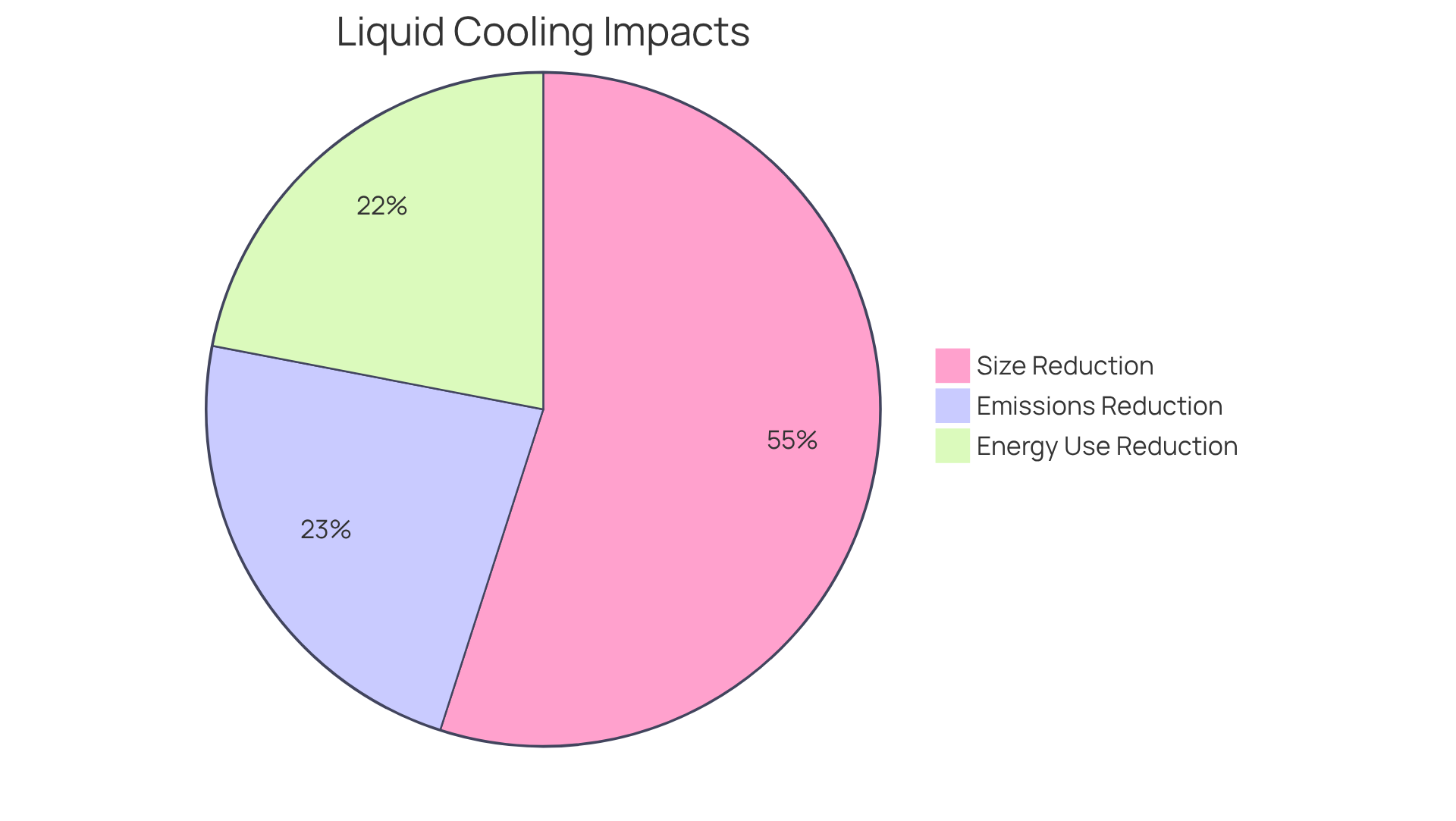
Scalability: Adapting Liquid Cooling for Growing Data Center Needs
The server liquid cooling system is part of liquid thermal management systems that offer remarkable scalability, enabling data facilities to adeptly respond to the escalating demands for temperature regulation as server loads increase. Their modular designs facilitate the seamless integration of additional temperature control units, minimizing the necessity for extensive infrastructure modifications. This adaptability is vital, particularly as the average rack power density has surged from 8 kW to 17 kW in just two years, with forecasts indicating it could reach 30-50 kW per rack by 2027. Such flexibility ensures that data facilities can effectively manage rising heat loads while sustaining optimal performance, positioning the server liquid cooling system as a future-proof solution for expanding operations.
Significantly, the global market for liquid temperature management in data facilities is anticipated to grow at a compound annual growth rate of 21.6% from 2025 to 2030. This underscores the increasing reliance on advanced temperature regulation technologies to meet the demands of AI-driven workloads and high-performance computing environments.
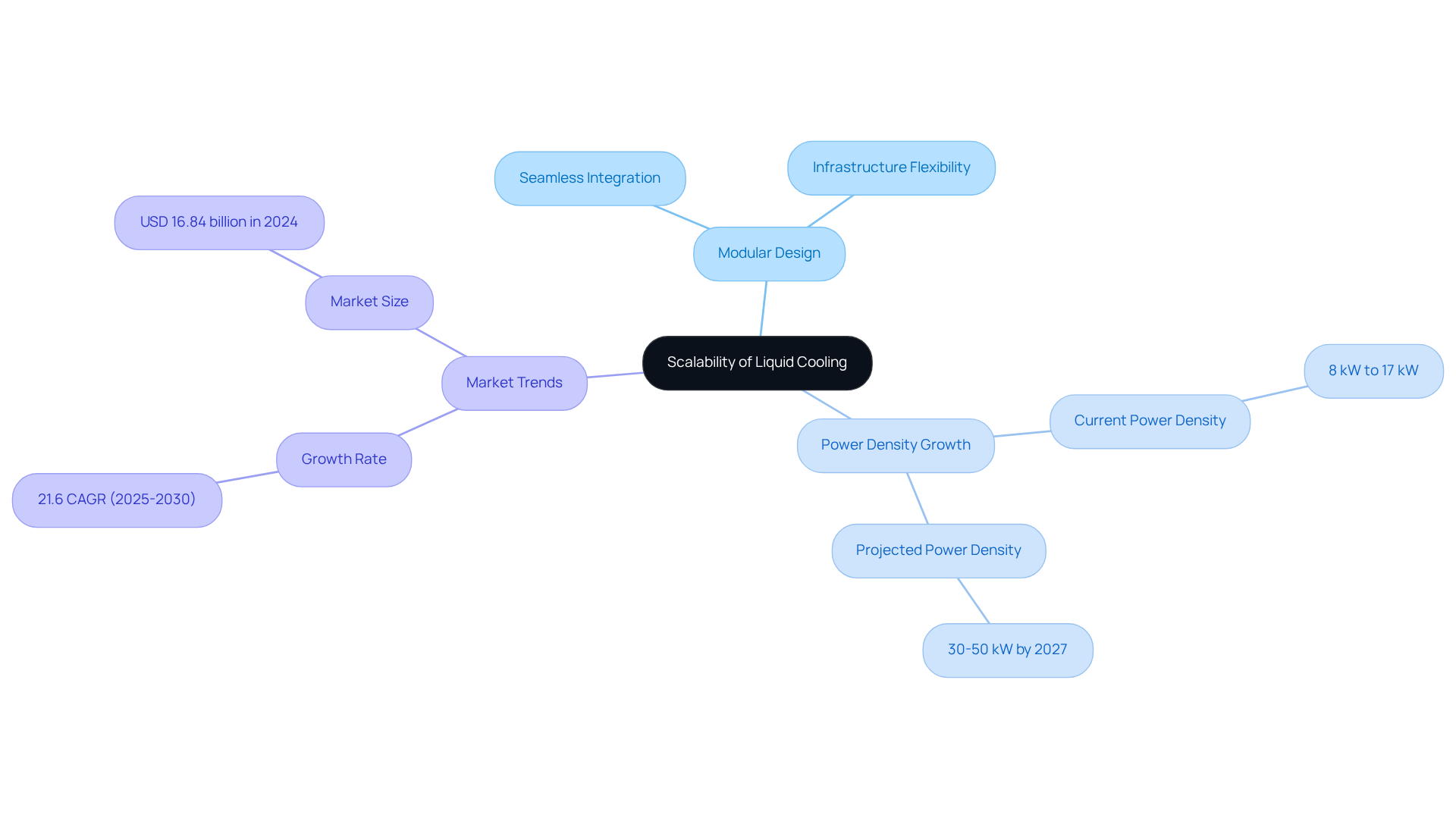
Maintenance Efficiency: Streamlining Upkeep with Liquid Cooling Systems
Server liquid cooling systems are designed to require less maintenance than traditional air cooling methods. Their closed-loop design and reduced number of moving parts significantly diminish the risk of mechanical failure, resulting in less frequent inspections.
Routine maintenance primarily involves:
- Monitoring coolant levels
- Ensuring the integrity of the infrastructure
This allows data center operators to optimize maintenance efforts efficiently. This operational efficiency translates to reduced downtime, as the server liquid cooling system helps devices remain reliable and require less frequent intervention.
For instance, advanced fluid refrigeration technologies can enhance performance while minimizing maintenance demands. Research indicates that these methods can lower industrial equipment temperatures by as much as 20°C compared to air refrigeration.
As noted by Pramod Borasi, the global market for fluid temperature regulation systems is poised for substantial growth, underscoring the significant reduction in operational downtime associated with this approach. Consequently, the server liquid cooling system for fluid temperature regulation emerges as an appealing choice for high-performance computing environments.
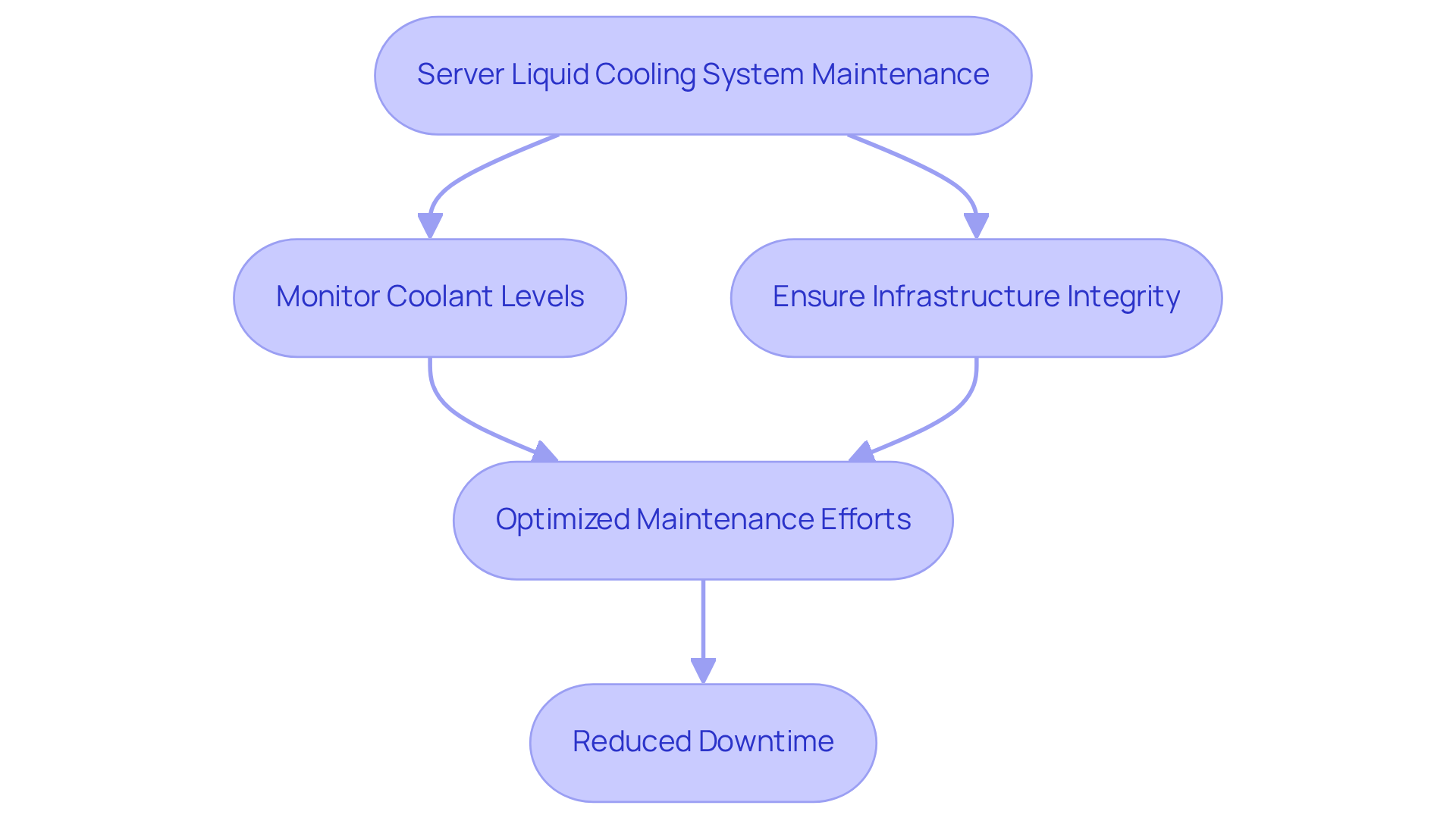
Technological Advancements: Innovations in Liquid Cooling Systems
Recent advancements in server liquid cooling systems have significantly transformed the landscape of thermal management in data centers. Innovations such as direct-to-chip and immersion methods utilize water-based and non-conductive liquids that enhance thermal conductivity and efficiency.
- Direct-to-chip temperature control circulates coolant directly to the chip surface, which is essential for managing the significant heat produced by high-performance processors, especially in AI tasks that require between 60 and 120 kW per rack, in contrast to the typical rack power density of about 15 kW.
- Furthermore, immersion technology, which submerges servers in dielectric fluids, provides outstanding heat transfer capabilities and can lower energy consumption by up to 50% compared to conventional air-based methods.
These technologies not only facilitate higher-density server configurations but also contribute to sustainability efforts by utilizing a server liquid cooling system that lowers energy consumption and carbon emissions. Notably, 22% of data facilities are presently employing server liquid cooling systems, indicating an increasing movement towards these effective solutions.
The worldwide direct-to-chip fluid temperature regulation market is anticipated to expand at a compound annual growth rate (CAGR) of 20.5% from 2025 to 2035, reflecting the rising need for effective thermal management solutions. As the sector progresses in innovation, coolant solutions are becoming more advanced, integrating developments like modular cold-plate arrangements and smart monitoring, which enhance performance and dependability for contemporary data facilities.
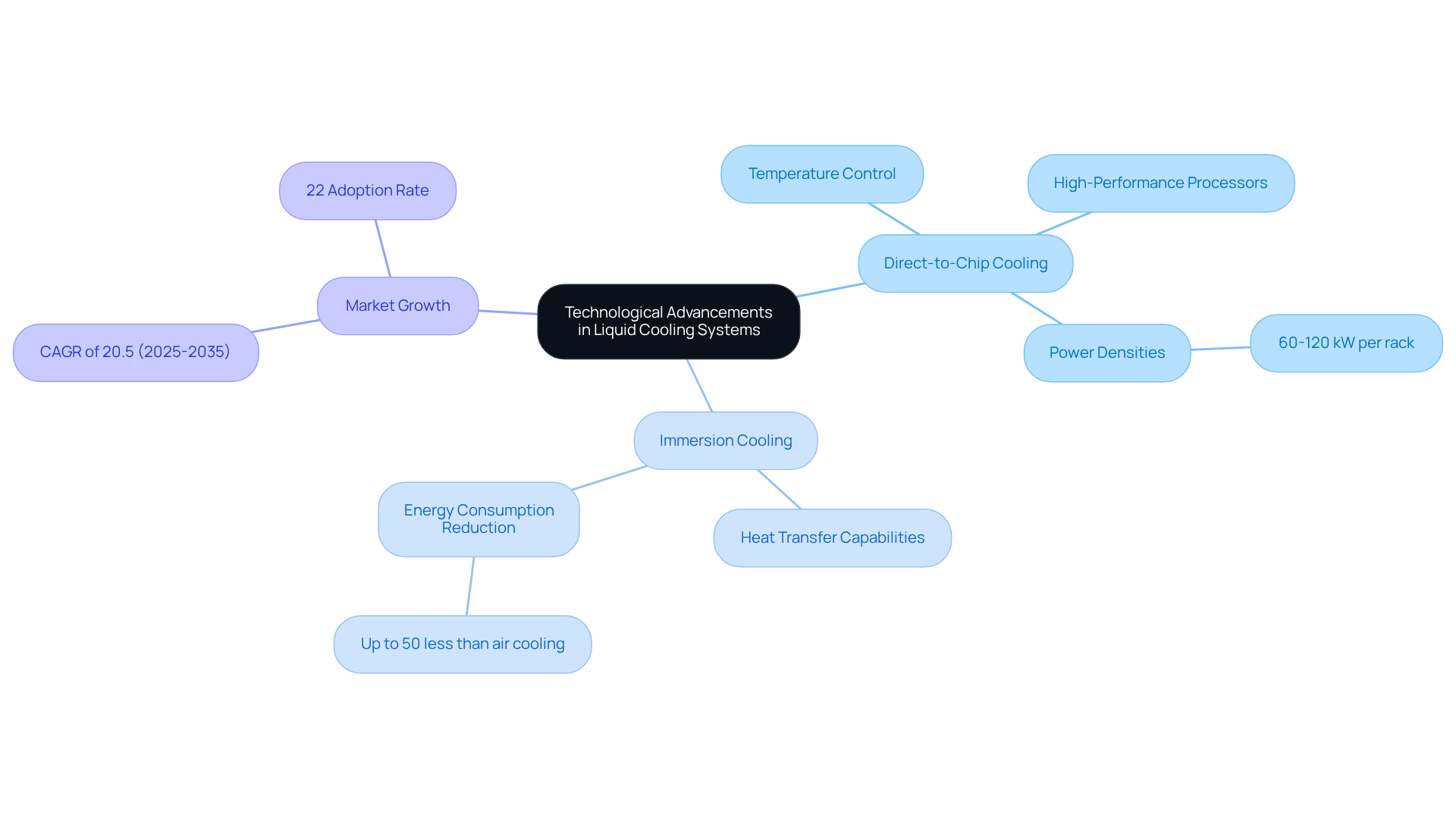
Infrastructure Compatibility: Integrating Liquid Cooling with Existing Systems
Incorporating fluid temperature regulation mechanisms into current data center frameworks necessitates meticulous planning and a thorough assessment of compatibility. Engineers must scrutinize existing layouts, temperature control demands, and equipment specifications to ensure a seamless integration process. Notably, many contemporary fluid temperature regulation methods, such as the server liquid cooling system, are designed to enhance traditional air-based setups, facilitating a hybrid strategy that maximizes efficiency while minimizing operational disruptions during the transition. This dual approach not only bolsters thermal performance but also addresses the compatibility challenges often faced when retrofitting advanced temperature control technologies into established systems.
For instance, the integration of temperature distribution units (CDUs) in a server liquid cooling system can significantly improve thermal management by regulating water temperature and flow, thus ensuring that both liquid and air temperature control systems operate in harmony. As the demand for high-performance computing escalates, the ability to effortlessly incorporate these temperature regulation techniques becomes increasingly vital for maintaining optimal operational efficiency in data facilities.
According to the U.S. Department of Energy, temperature regulation can account for 30-40% of a data facility’s total energy expenditure, underscoring the importance of effective temperature management strategies. Furthermore, the global data facility temperature regulation market is projected to reach USD 42.48 billion by 2032, highlighting the growing significance of fluid temperature management solutions within the sector. Industry experts emphasize that overcoming compatibility challenges is essential for successful integration, making collaboration with experienced vendors imperative.
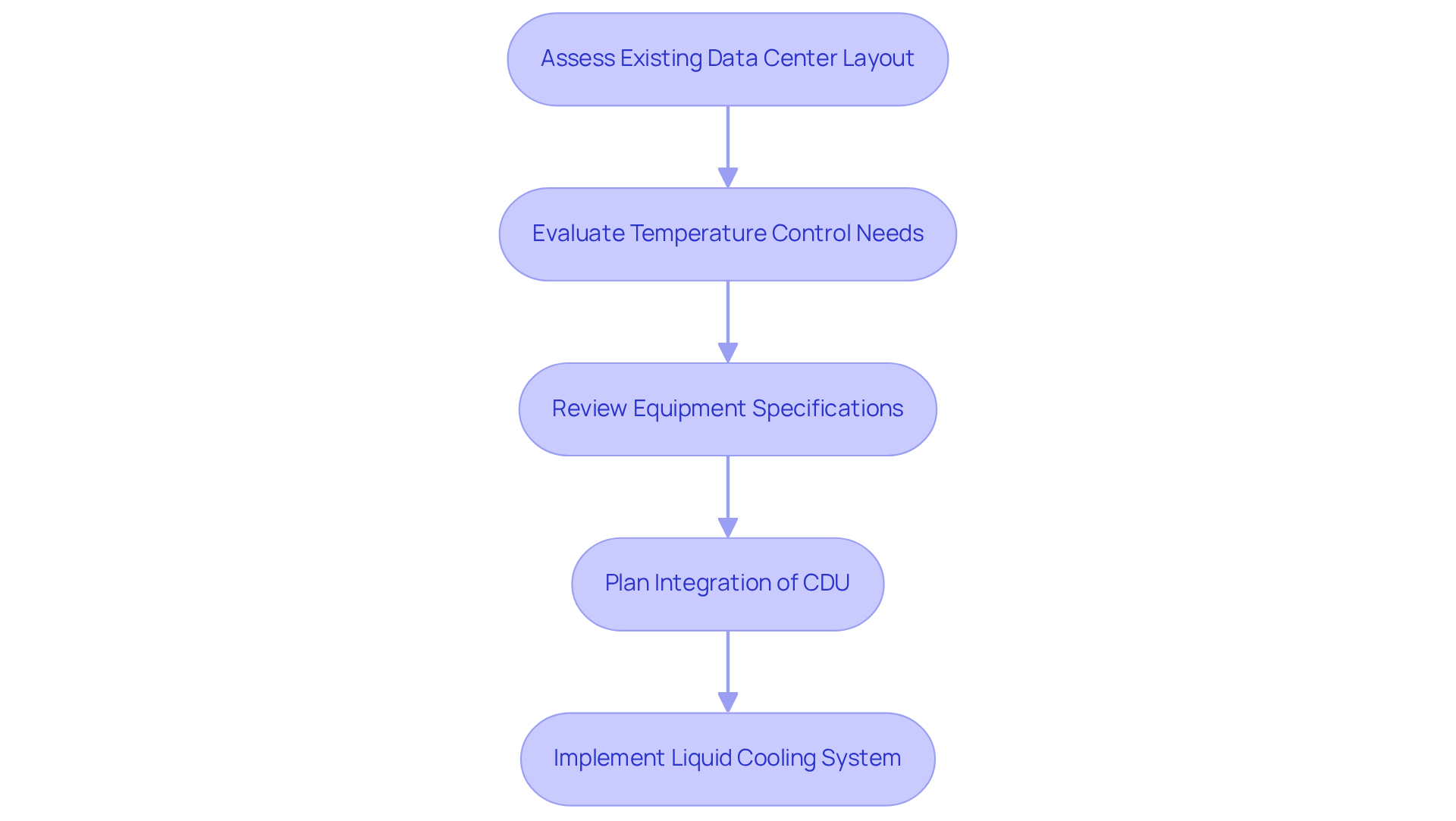
Cost Savings: Long-Term Financial Benefits of Liquid Cooling Systems
While the initial investment in fluid temperature regulation systems may surpass that of traditional air-based alternatives, the long-term economic benefits are compelling. Data centers that utilize a server liquid cooling system experience a significant reduction in energy consumption, leading to lower operational costs. Additionally, these systems typically require less maintenance, further enhancing their cost-effectiveness. Over time, the return on investment (ROI) for fluid temperature regulation can be considerable, with forecasts suggesting that facilities adopting these technologies could experience a marked decrease in total cost of ownership (TCO).
For instance, immersion thermal management systems achieve an impressive power usage effectiveness (PUE) of 1.2, compared to an average PUE of 2 for conventional air-based methods, reflecting a 96% improvement in computing efficiency. This enhanced efficiency not only extends the lifespan of hardware but also reduces maintenance costs, making the implementation of a server liquid cooling system a financially prudent choice for sustainable operations.
As the server liquid cooling system market is anticipated to expand from USD 4.34 billion in 2024 to USD 10.87 billion by 2030, at a compound annual growth rate (CAGR) of 22.87%, the economic advantages of these systems are becoming increasingly evident, positioning them as a strategic investment for future-ready data centers.
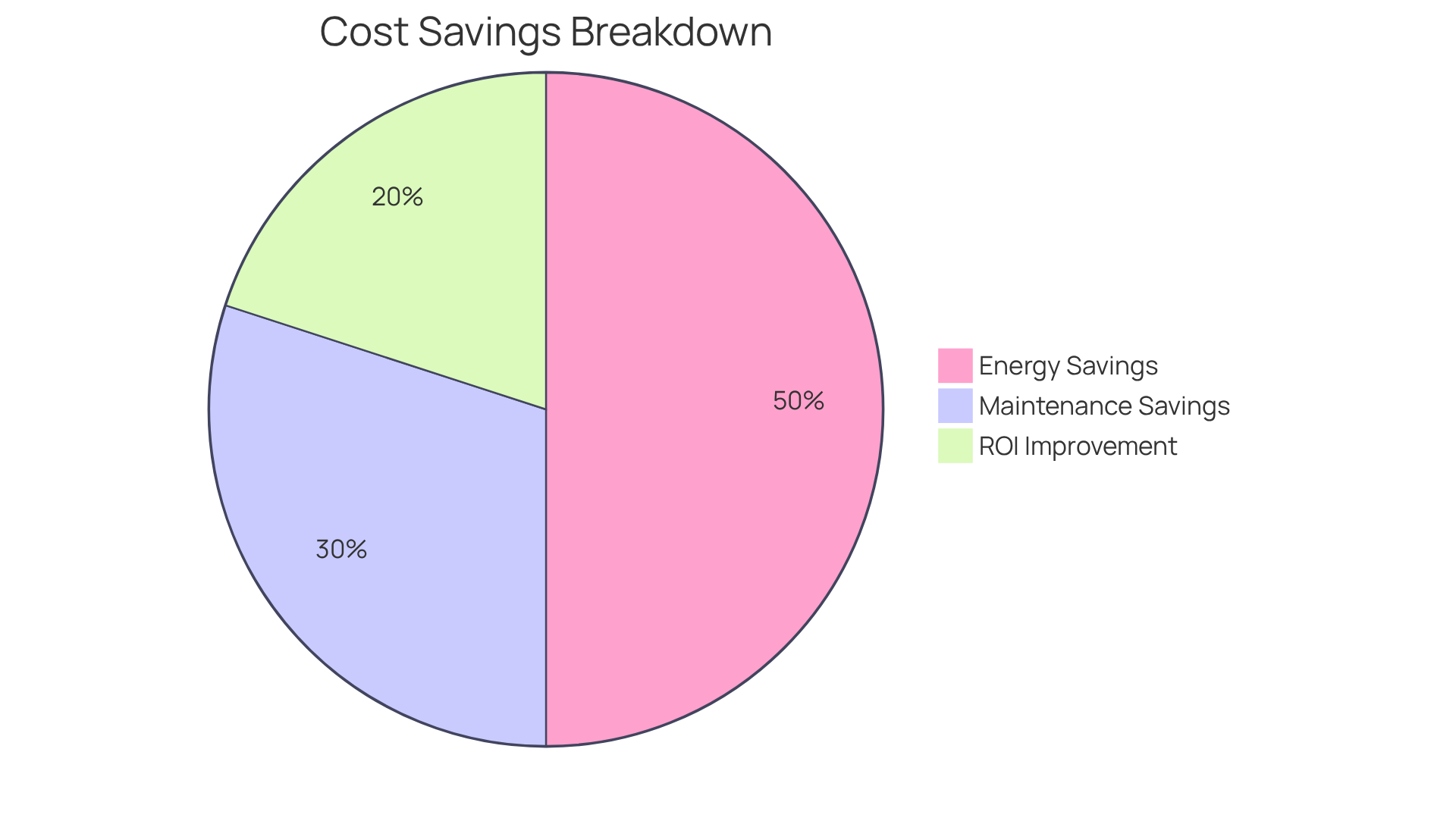
Conclusion
The exploration of server liquid cooling systems highlights their transformative potential for data centers, underscoring their critical role in enhancing efficiency, performance, and sustainability. These innovative cooling solutions effectively tackle the increasing thermal management challenges faced by electronics engineers, while also serving as a strategic response to the rising demands for energy efficiency and reduced operational costs.
Key benefits of liquid cooling systems are numerous:
- They offer significant energy savings
- Improved server reliability
- Optimized space utilization
- A lower environmental impact
Additionally, the scalability and maintenance efficiency of these systems further emphasize their importance in adapting to the dynamic landscape of high-performance computing. As data centers seek operational excellence, the integration of advanced liquid cooling technologies becomes essential in achieving these objectives.
In conclusion, adopting server liquid cooling systems transcends a mere technical upgrade; it represents a proactive step towards a more sustainable and economically viable future for data facilities. Embracing these solutions can yield substantial long-term benefits, such as reduced energy consumption and lower maintenance costs, ultimately fostering a more resilient and efficient data center infrastructure. As the industry continues to evolve, the imperative for engineers and facility operators is unmistakable: invest in innovative cooling technologies to secure both immediate and future gains in performance and sustainability.
Frequently Asked Questions
What solutions does Gagner-Toomey Associates provide for data centers?
Gagner-Toomey Associates specializes in innovative temperature regulation solutions, particularly focusing on a server liquid cooling system that enhances performance and efficiency in data centers.
How is the demand for energy-efficient refrigeration solutions projected to change in the coming years?
The demand for energy-efficient refrigeration solutions is expected to grow from $5,654.8 million in 2024 to $48,427.0 million by 2034, with a compound annual growth rate (CAGR) of 23.96%.
What are the benefits of server liquid cooling systems compared to traditional air cooling methods?
Server liquid cooling systems significantly enhance energy efficiency, achieving energy reductions of up to 90% and average savings around 50% compared to traditional air cooling methods.
How does immersion technology impact data centers?
Immersion technology can reduce a data center’s physical footprint by as much as 60%, optimizing space usage while effectively managing escalating thermal loads.
What advanced technologies are used in server liquid cooling systems?
Advanced pump technologies, such as solenoid pumps operating at pressures up to 16 Bar and rotary boost pumps with DC brushless motors, are used in server liquid cooling systems for precision control and low noise operation.
What is the projected growth rate for the server liquid cooling systems market?
The server liquid cooling systems market is projected to expand at a CAGR of 21.30%, reflecting a shift towards more efficient and sustainable temperature control solutions.
How do server liquid cooling systems enhance server reliability?
Server liquid cooling systems provide exceptional thermal regulation, effectively dissipating heat from critical components, which reduces the risk of overheating and equipment failures, thereby boosting server reliability.

